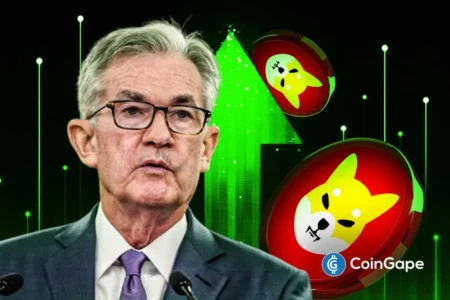Fed’s Possible Rate Cut: Insights from Treasury Secretary Scott Bessent
Treasury Secretary Scott Bessent recently made headlines by suggesting that the Federal Reserve may need to implement a significant fee rate cut at its upcoming September meeting. In light of the latest inflation data, Bessent advocates for a bold move—specifically, a 50 basis-point cut—following the Fed’s decision to refrain from altering rates during its last policy meeting. This article delves into the implications of Bessent’s statements, the current state of inflation, and what it all means for the economy.
Insights on Inflation Data
Bessent’s call for a larger fee rate cut stems from what he described as “incredible” inflation statistics released for July. The consumer price index (CPI) showed a modest 0.2% rise from the previous month. Core inflation, excluding volatile food and energy prices, increased by 0.3%, aligning with economist predictions. Interestingly, while costs for services rose, the prices of goods remained relatively stable despite recent tariff increases imposed by the Trump administration. This data has led Bessent to argue that the Federal Reserve possesses the leeway to act more decisively in its monetary policy approach.
The Potential for a 50 Basis-Point Cut
Bessent’s recommendation for a 50 basis-point cut indicates a shift in the administration’s stance on economic management. As policymakers weigh the impact of prevailing inflation rates on economic momentum, the administration is signaling an increased urgency for the Fed to support growth through bold monetary policies. The focus is on maintaining a delicate balance between controlling inflation and fostering economic expansion, making the upcoming September meeting of considerable importance.
The Role of Stephen Miran
In addition to his advocacy for a fee rate cut, Bessent expressed optimism regarding the confirmation of Stephen Miran, Trump’s nominee for an open Fed board seat. Miran currently leads the White House Council of Economic Advisers. If confirmed before the September 16-17 policy meeting, Miran’s presence could have significant implications for the central bank’s future decisions. With a term set to last until January, there are indications that he could serve for an extended period, influencing the Fed’s direction and emphasis on economic management.
The Search for New Fed Leadership
As the Fed prepares for upcoming discussions on monetary policy, the search for a new Federal Reserve chair remains on the table. Jerome Powell’s term ends in May, and President Trump is considering a variety of candidates to fill this pivotal role. Bessent has highlighted three key qualities the administration seeks in a new chair: strong views on monetary policy, a clear regulatory approach, and an ability to manage and reform the Fed. Bessent’s commentary underscores concerns that the institution has become "bloated" over time, a situation that could jeopardize its independence.
Political Pressure on Powell and the Fed
President Trump has publicly criticized Jerome Powell for not implementing rate cuts this year, adding a layer of political pressure on the central bank. Bessent’s remarks reflect an administration eager for a swift and substantial monetary response to support economic growth. Fed officials, on the other hand, emphasize the need for robust evidence regarding the inflationary effects of tariff increases before making any significant moves. The tension between political expectations and economic realities will play a key role in the upcoming Federal Reserve deliberations.
Anticipating September’s Meeting
As the September meeting approaches, all eyes will be on the Federal Reserve’s decision regarding potential fee rate cuts. Bessent’s strong advocacy for a 50 basis-point reduction suggests a clear signal from the Treasury Department in favor of proactive economic measures. With the combination of inflation data, the possible confirmation of Miran, and the ongoing discussion regarding new leadership at the Fed, the outcomes of this meeting could pave the way for significant shifts in monetary policy and economic direction.
In conclusion, the call for a more substantial fee rate cut reflects both the current economic data and the administration’s desire to revitalize growth. As we await the September meeting, the interplay of political pressures, inflation statistics, and potential new leadership at the Federal Reserve will shape the conversation about America’s economic future.
















